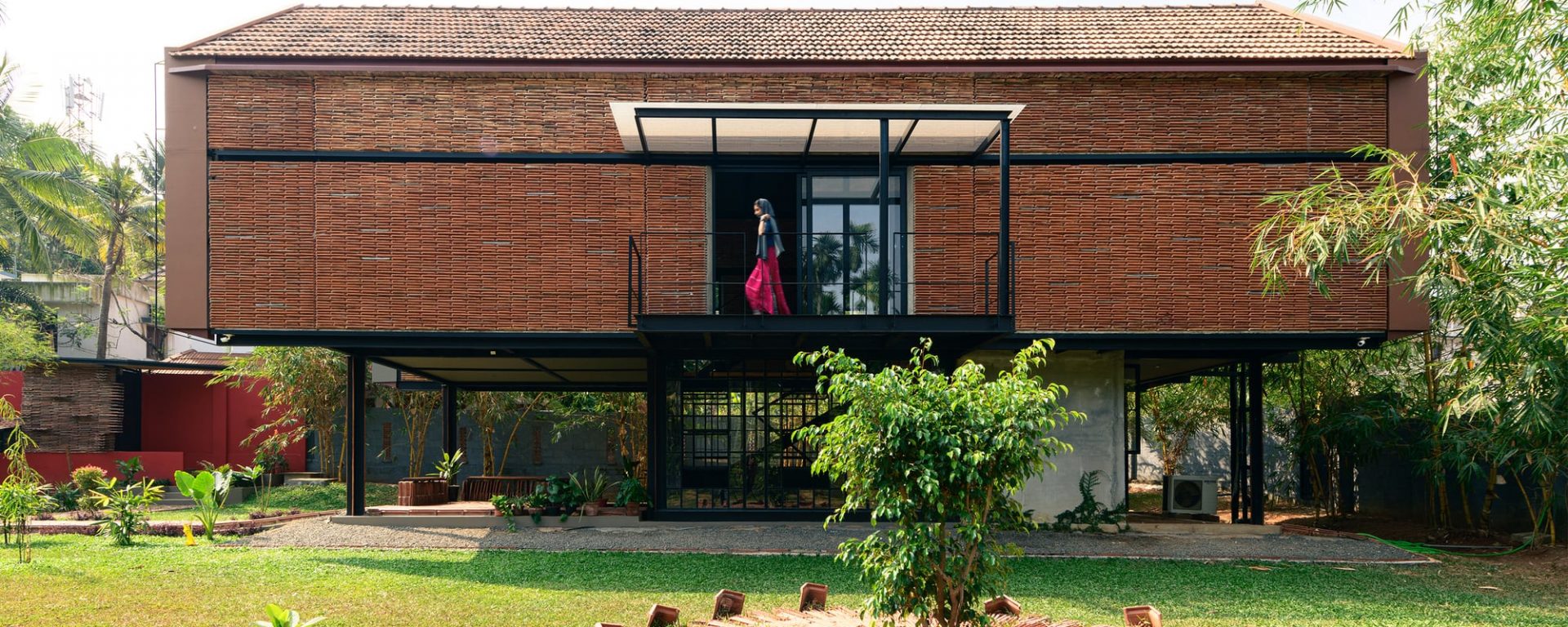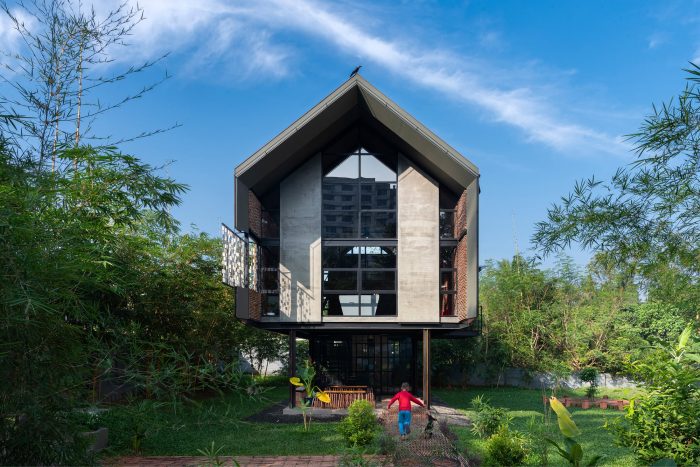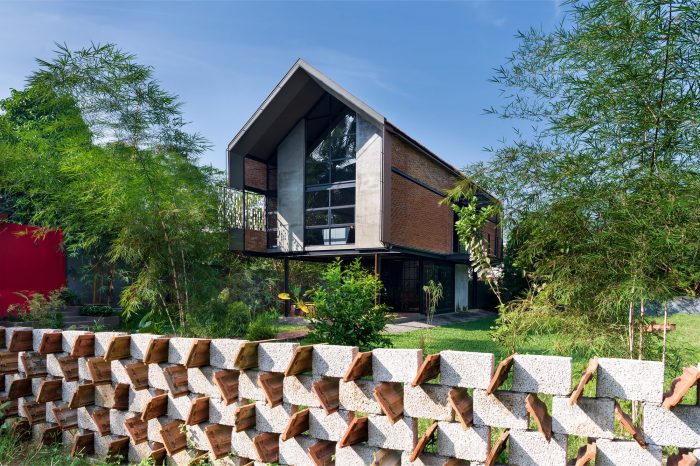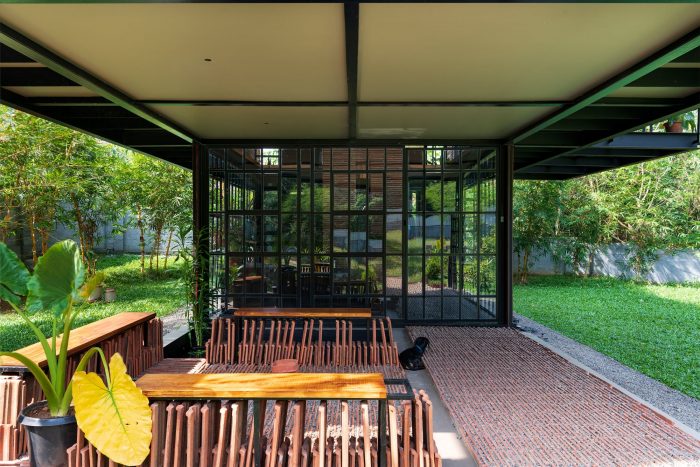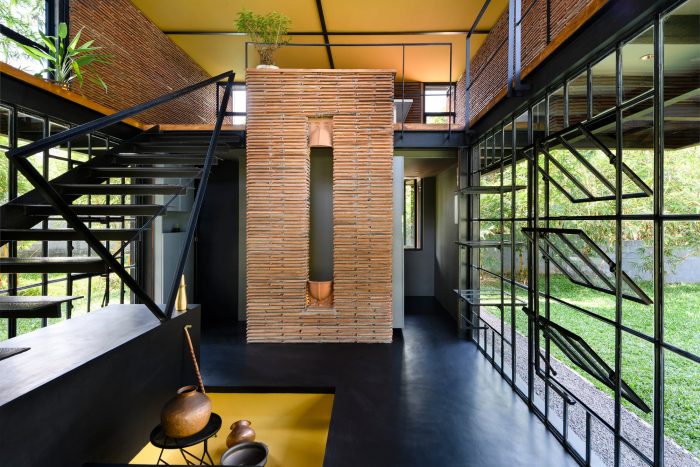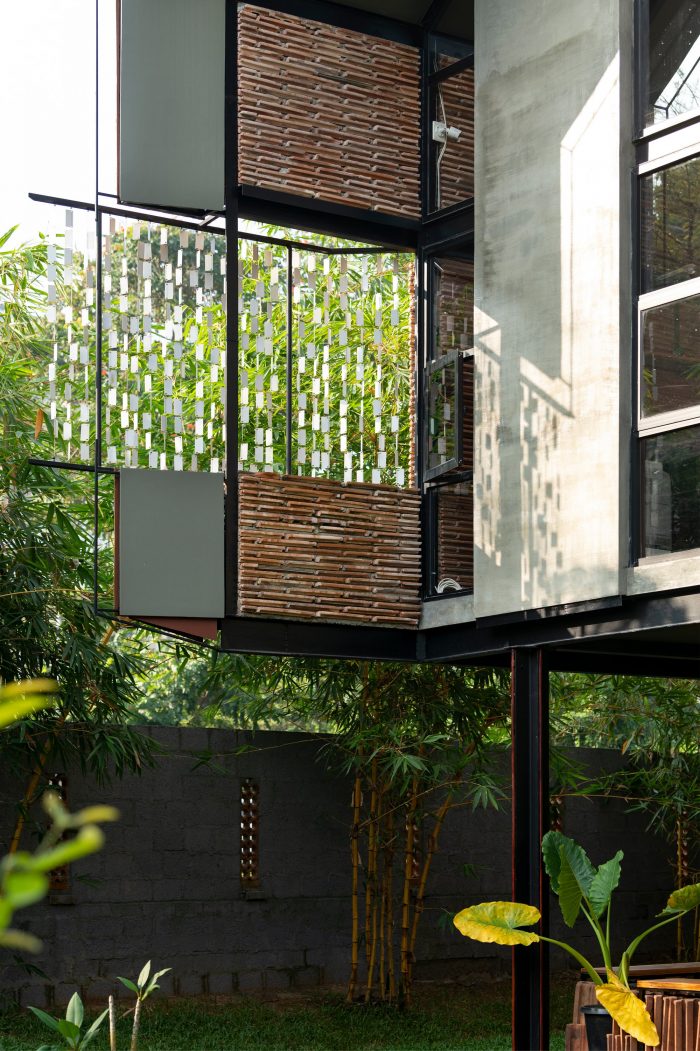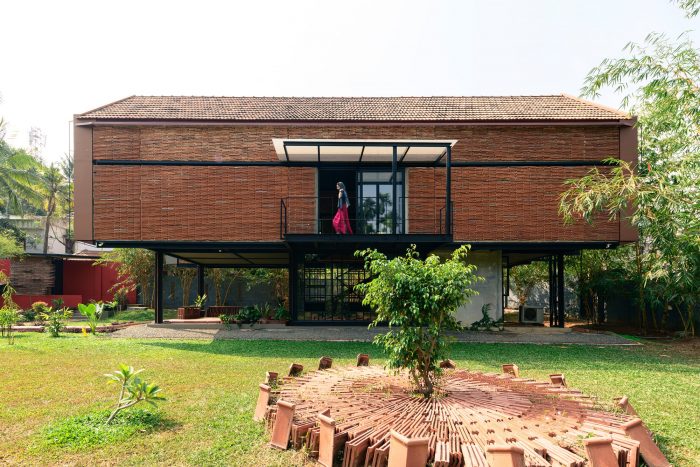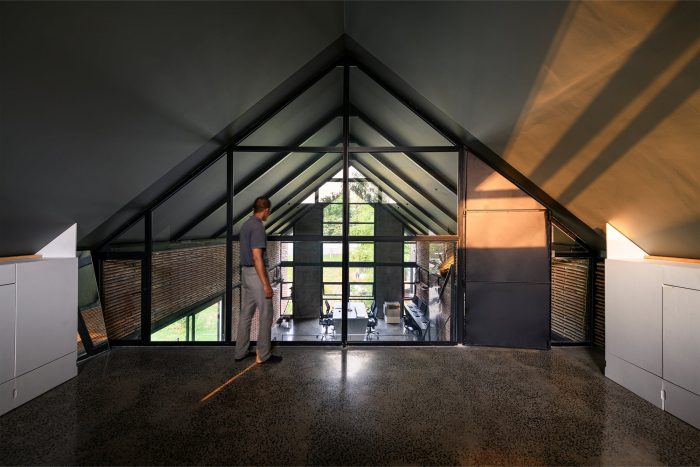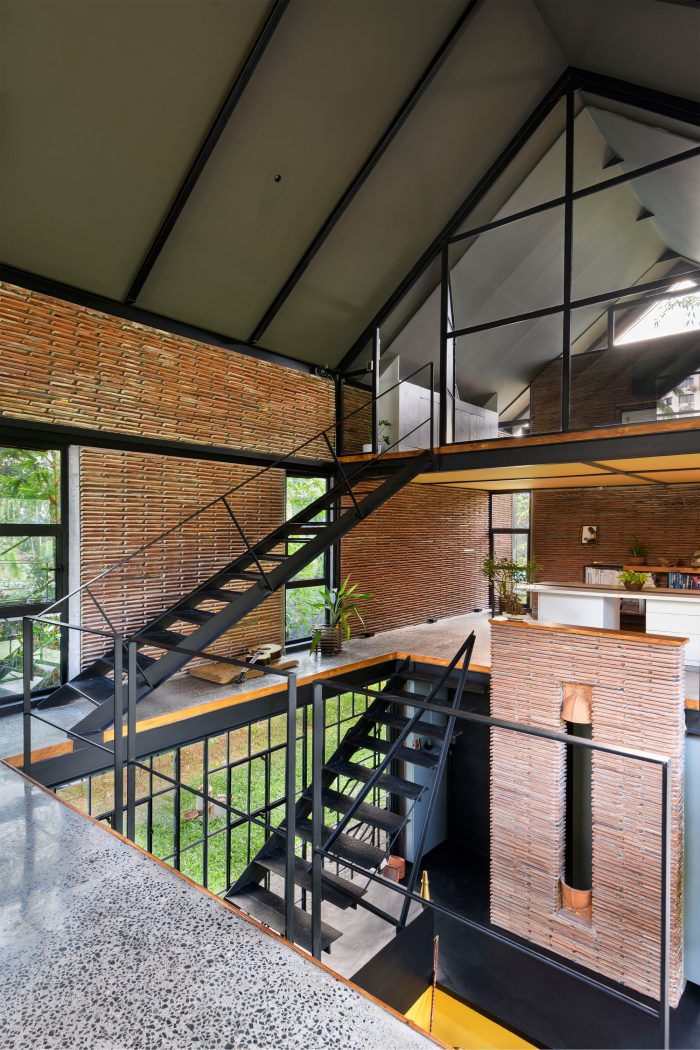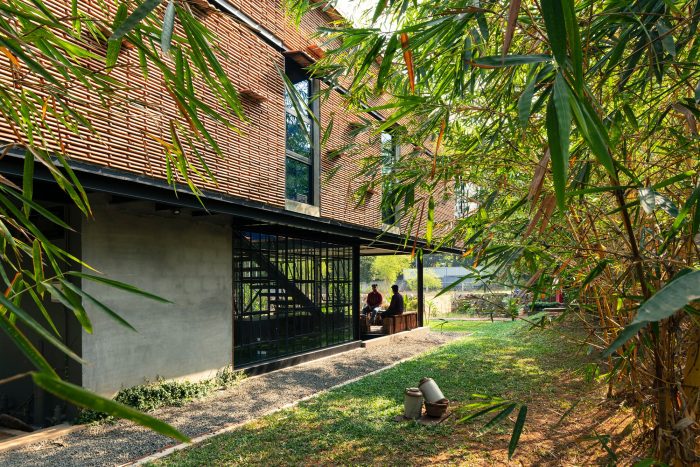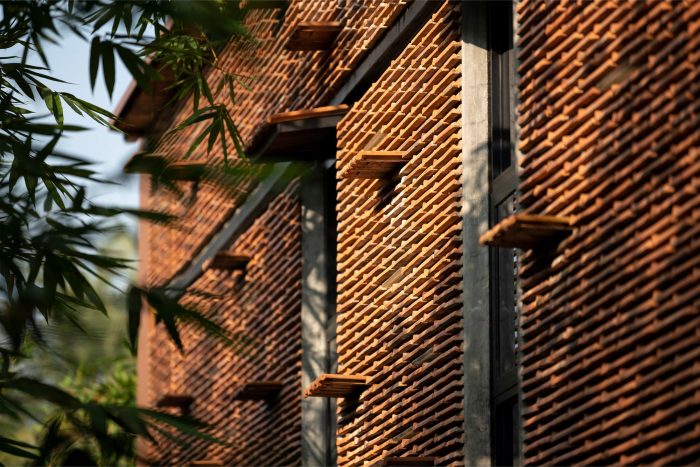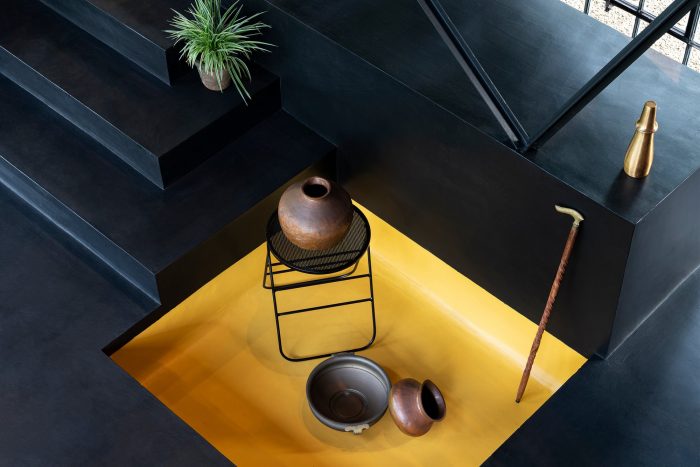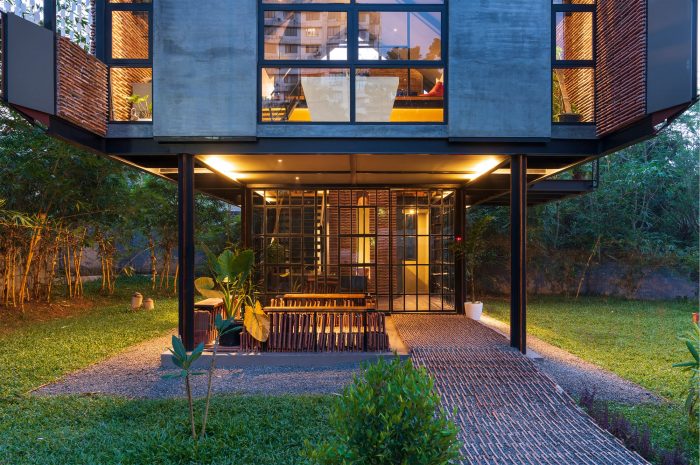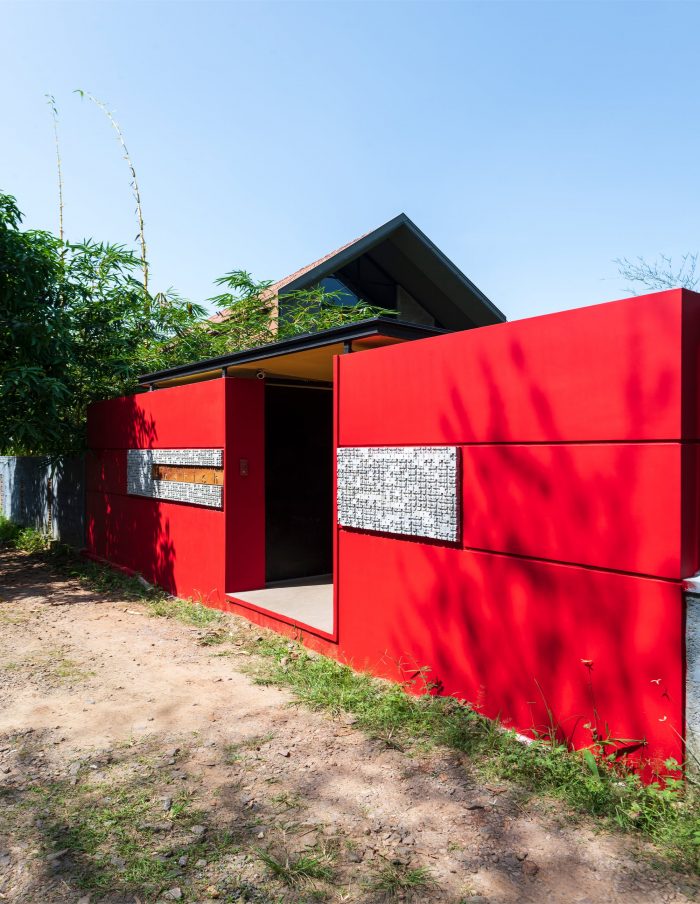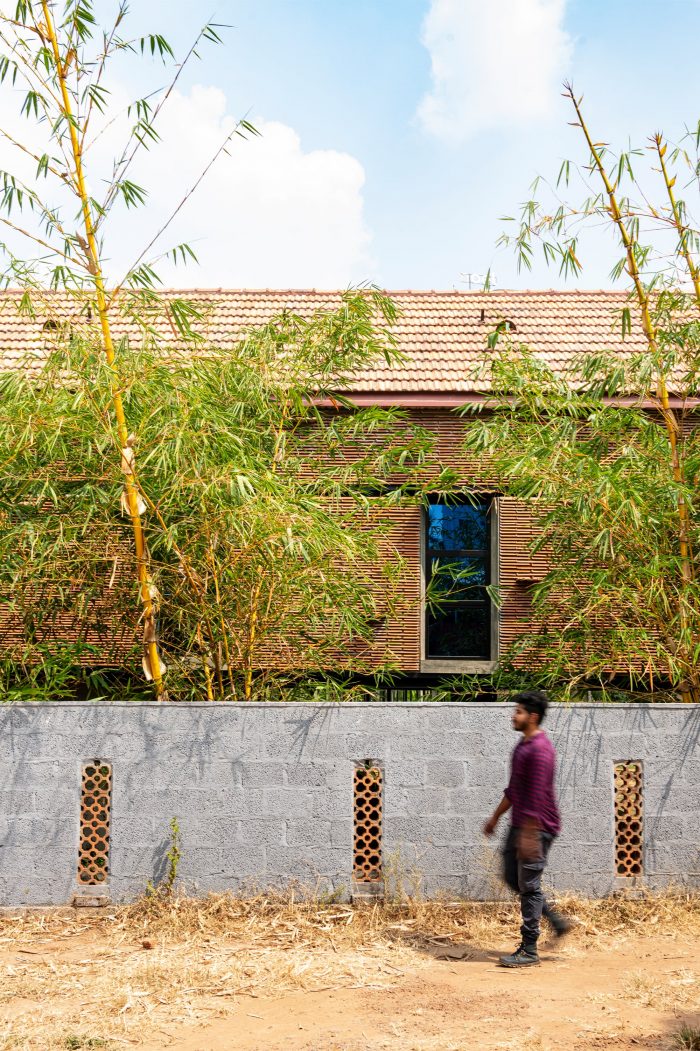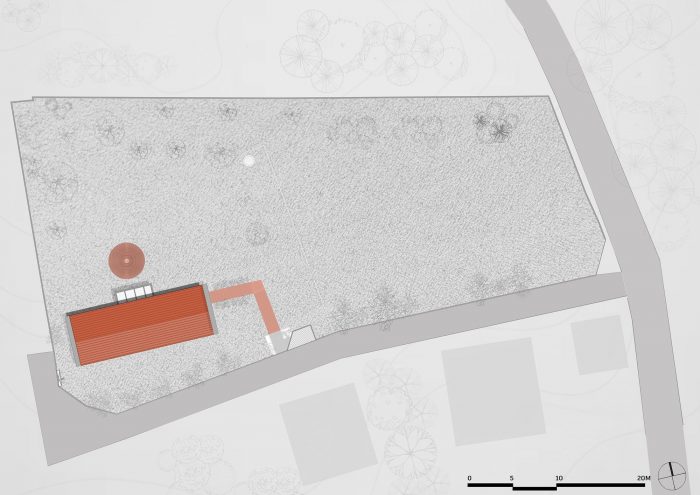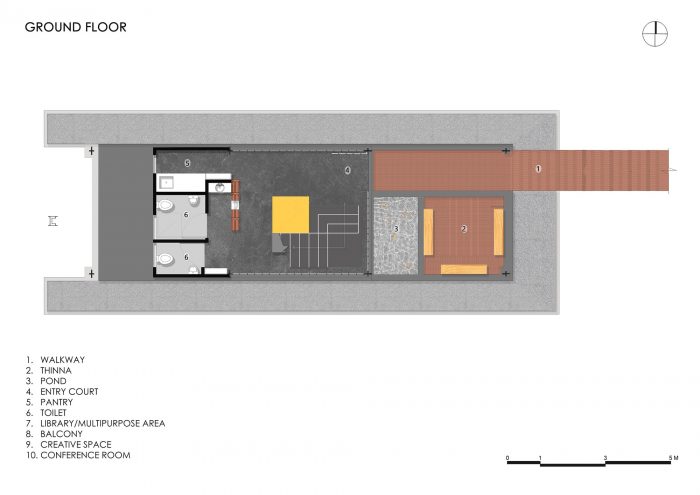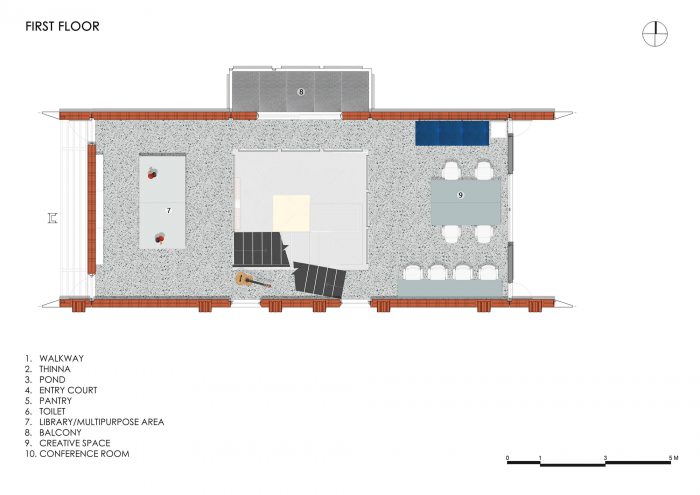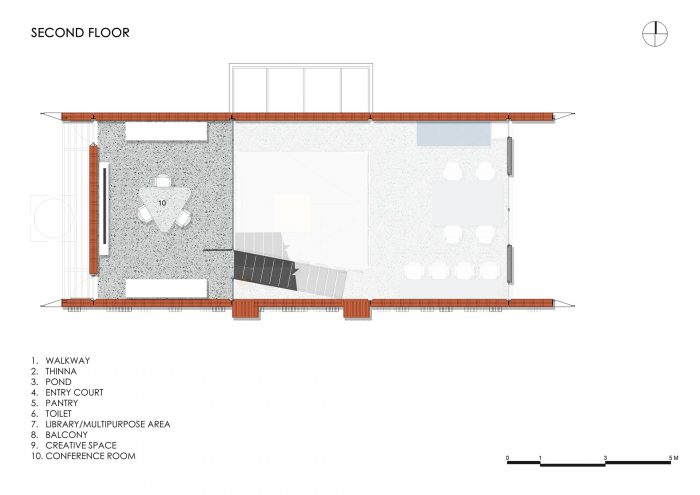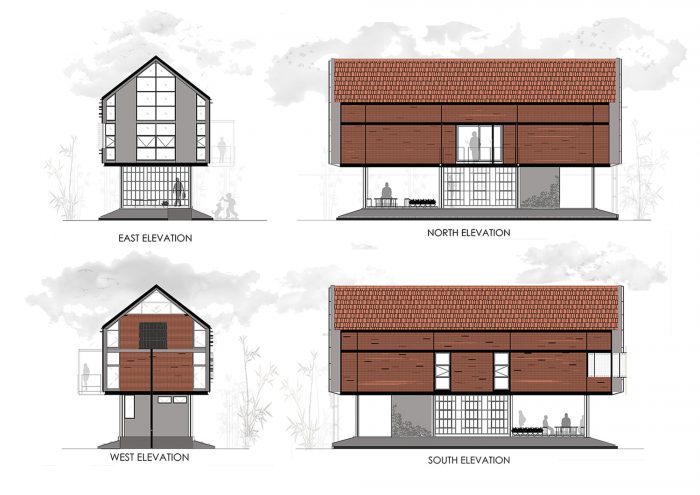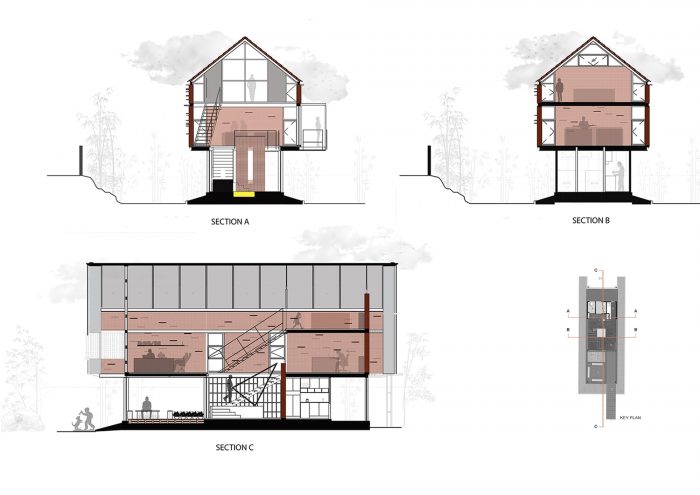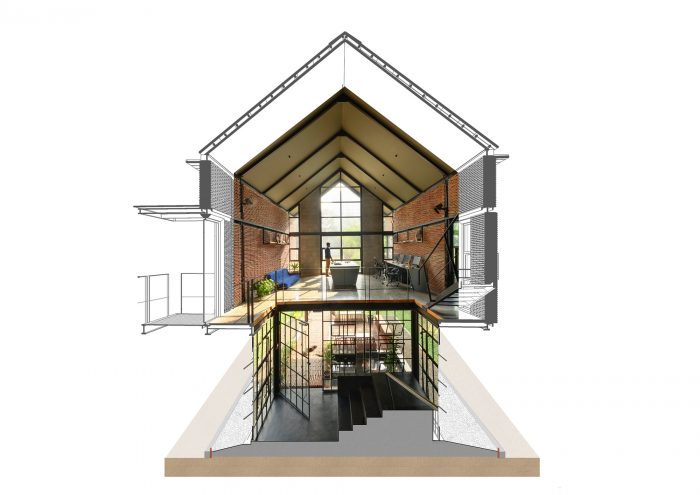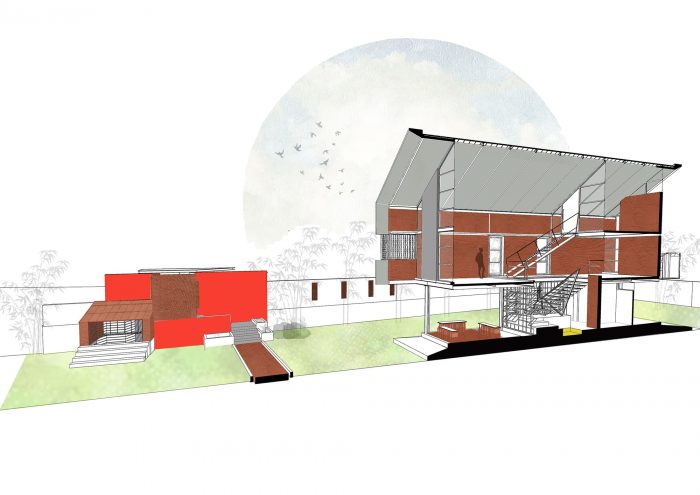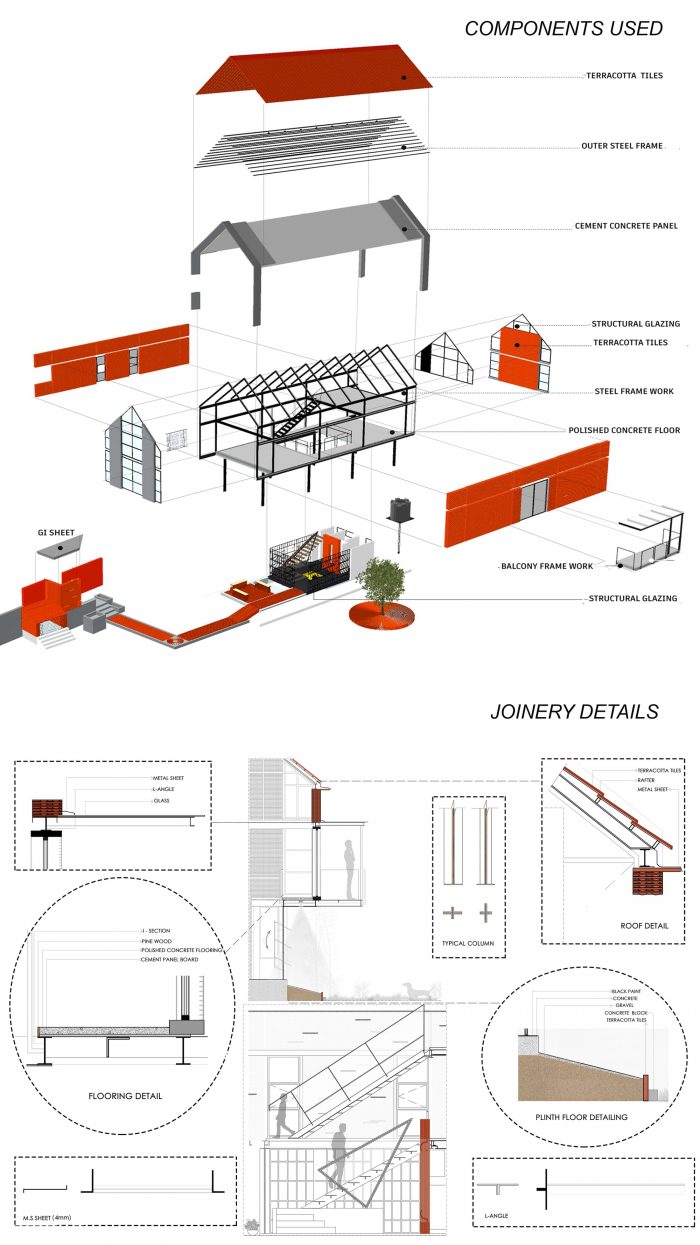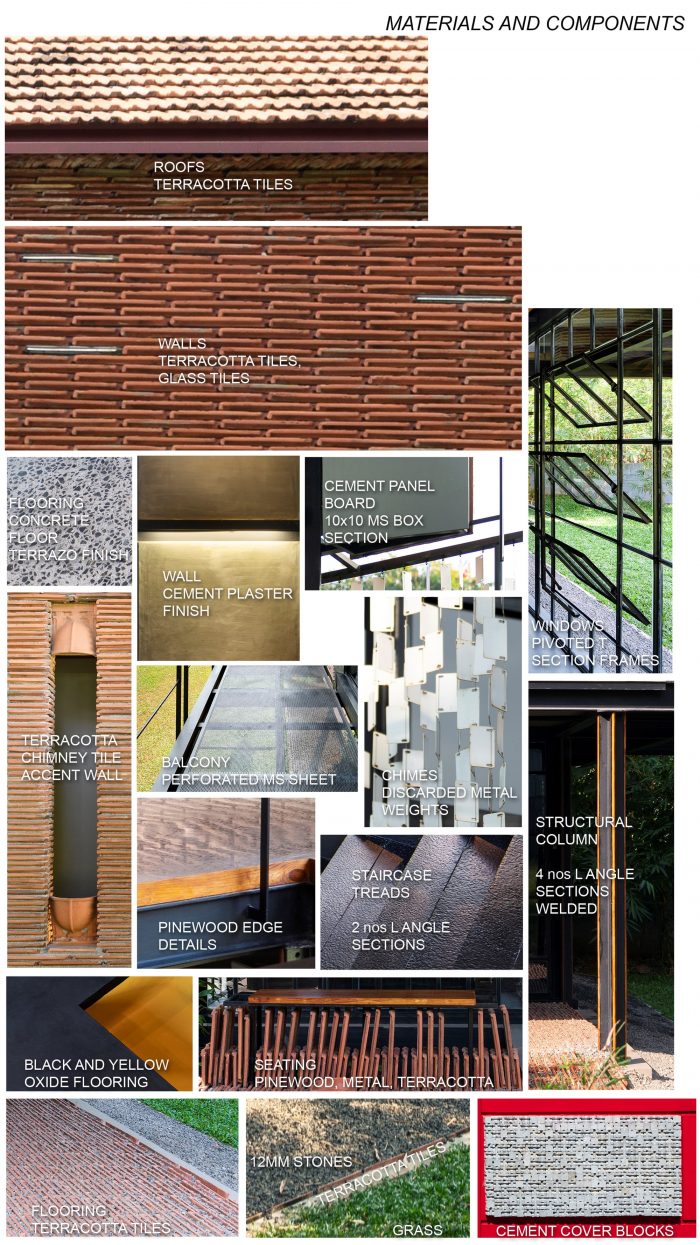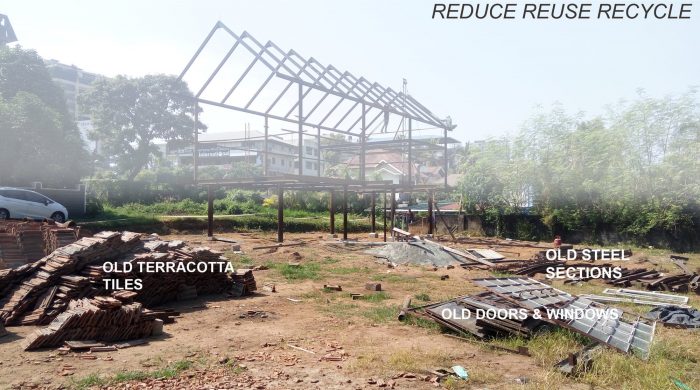一个由14,858块瓷砖组成的故事。Koshish位于高知的中心地带,当人们穿过狭窄的泥巴路,来到它充满活力的红色入口时,它的故事就开始了。作为可持续发展建筑的倡导者,该项目在不到6个月的时间内建成,重新利用了从8公里外的一个破旧的纺织厂获得的曼加罗尔旧瓦片、钢材和窗户。其余的瓦片从四个不同的地方采购,现在都构成了项目的通道、墙壁和屋顶。
A story of 14,858 tiles. Located in the heart of Kochi, the story of Koshish begins as one traverses the narrow mud road that leads to its vibrant, red entrance. A proponent of sustainable architecture and erected over fewer than six months, the project repurposes old Mangalore tiles, steel, and windows sourced from a dilapidated textile factory, 8 kilometers away. The remaining tiles were procured from four different locations, all of which now make up the project’s pathway, walls, and roof.
随着喀拉拉邦大部分地区抛弃了传统的赤土瓦片,转而使用更现代的材料,古老的曼加罗尔瓦片的意义最近被忽略了。凉爽的温度、透气性和易于观察的永恒的外观只是该结构的核心材料所拥有的众多优势中的一部分。
With much of Kerala discarding traditional terracotta tiles in favor of more contemporary materials, the significance of the age-old Mangalore tiles has been overlooked of late. Cooler temperatures, breathability, and a timeless appearance that’s easy on the eye are just a few of the many advantages that the core material of the structure possesses.
该设计旨在创造一种自然和周围环境与主体结构完美和谐共存的无缝体验。一个由夹层L型柱支撑的高架结构、大面积的旋转玻璃和赤土砖包覆的墙壁,模糊了室外和室内空间的区别,带来了丰富整个空间和居民的协同效应。每层楼都有其独特的用途,底层包括一个毗邻锦鲤池的阳台、洗手间和一个公用设施空间。
The design aims to create a seamless experience of nature and surroundings coexisting in perfect harmony with the principal structure. An elevated structure supported on sandwiched L-section columns, extensive pivoted glazing, and terracotta-tile clad walls, blurs the line of distinction between outdoor and indoor spaces, bringing a synergy that enriches the entire space, and its inhabitants. Each floor serves its distinct purpose, with the ground level comprising a verandah adjacent to a koi pond, washrooms, and a utility space.
上了楼梯,就到了合作空间,水磨石地板,环绕着三层高的中庭,将每一层连接起来。每隔一段距离就有一个窗户,沿着北面有一个悬臂阳台,玻璃窗一直延伸到建筑东侧的顶点,提供了剩余场地的完整视野,同时非常强调充足的通风和自然采光。
On ascending the stairs, one arrives at the collaborative space, finished with terrazzo flooring and encircling the triple-height atrium that binds each level together. Windows at regular intervals, a cantilevered balcony along its north face, and glazing running up to the apex of the eastward side of the building offer a complete view of the expanse of the remaining site while placing great emphasis on ample ventilation and natural lighting as a whole.
建筑完成后,第二层也就是最后一层作为头脑风暴舱,容纳了一个夹层窗户,将光线引向主要工作区。在设计上,每一层都创造了一个层次的相互作用,居民在每个空间的过渡中都会体验到一连串的高度下降。阳光和阴影在整个空间的微妙变化,确保在Koshish的一天中没有停顿的时刻。Koshish非常重视可持续发展的做法,并打算提供一个与自己的家一样舒适的环境,为其居民、材料和永恒的建筑注入了活力。
The building is complete, with the second and final level, which acts as a brainstorming pod, and accommodates a clerestory window that directs the light towards the primary workspace. Designed to create an interplay of levels on each floor, the inhabitants experience a sequence of descending heights as they transition through each space. A subtle play of sunlight and shadows across the space ensures that there is no moment of pause throughout a day in Koshish. With great importance given to sustainable practices and intent on providing an environment indistinguishable from the comforts of one’s own home, Koshish breathes life into its inhabitants, materials, and timeless architecture.
Architects: Koshish
Area : 2568 ft²
Year : 2020
Photographs :Justin Sebastian
Lead Architect : Koshy P Koshy
Design Team : Roshith Prakash, Rizwan Jaleel
Civil Structure Fabrication : Jude, Anas
Structure Fabrication : Hekur
Aluminium/Steel Structural Systems : Hekur
Concrete Terrazzo Flooring : Namra Tech Solutions-Ajmal
City : Kochi
Country : India

